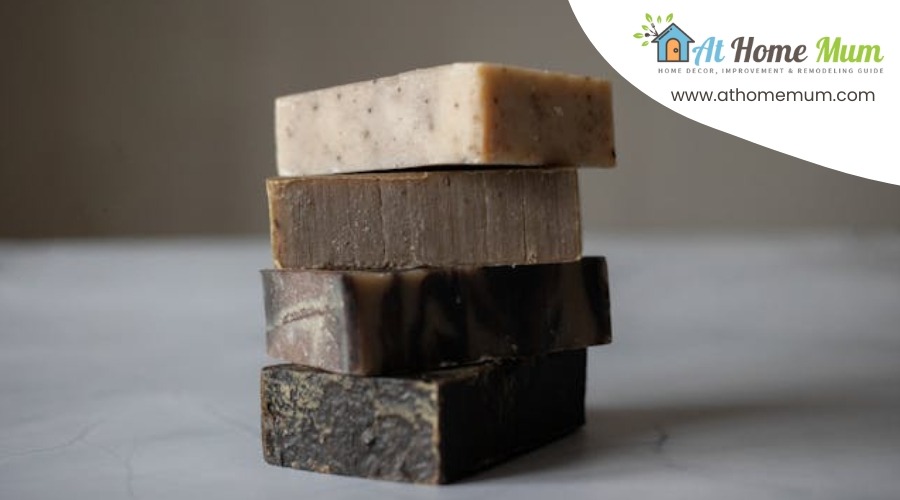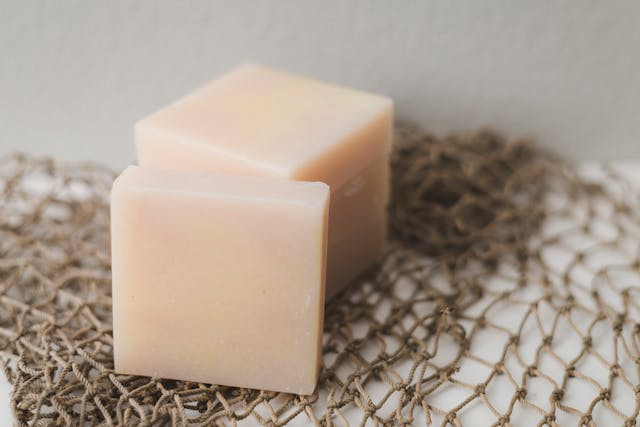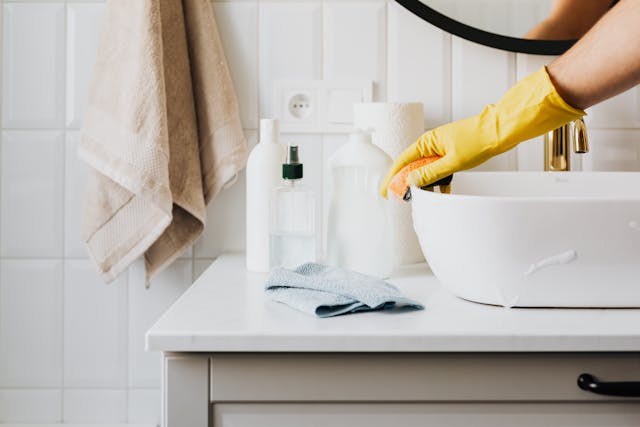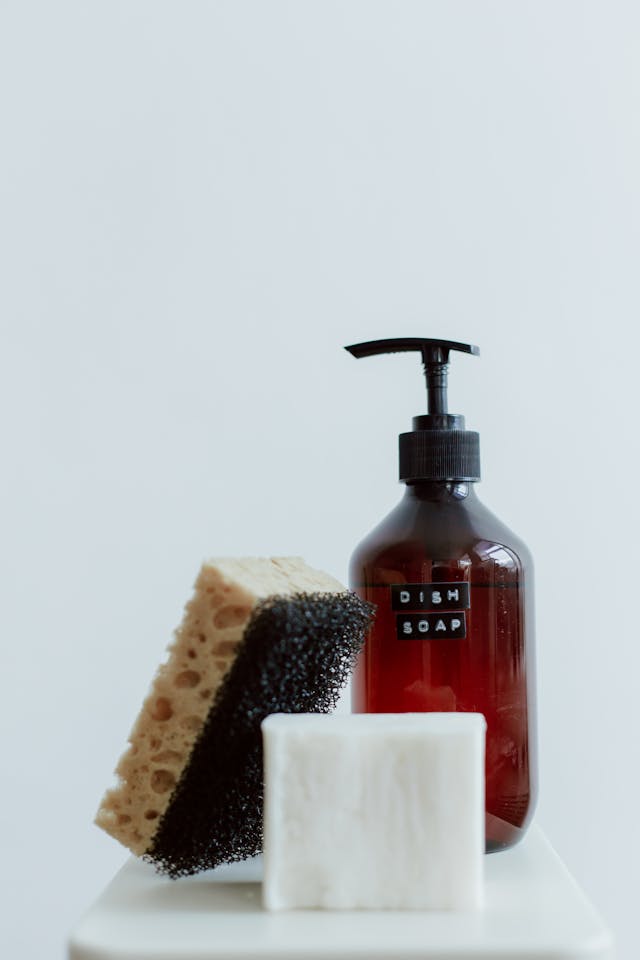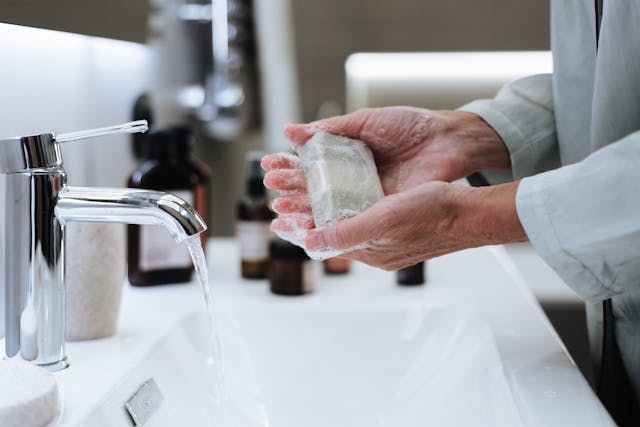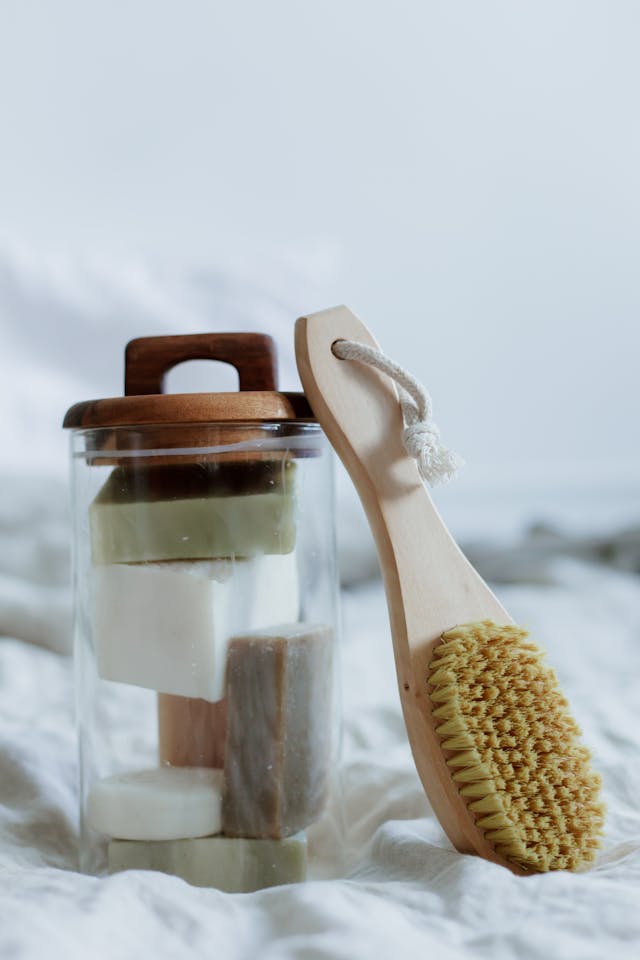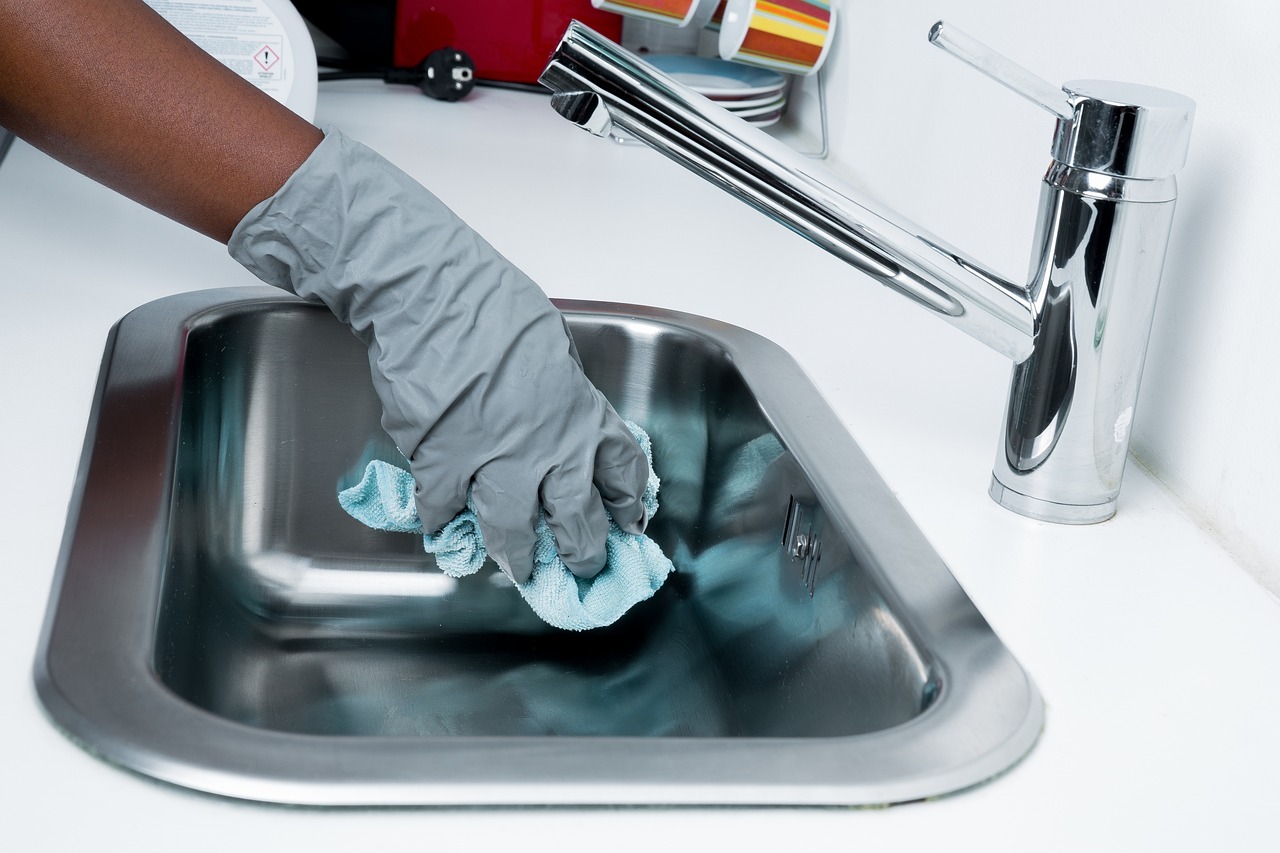When it comes to maintaining a clean home, the choice of cleaning products is crucial. Among the myriad options, soaps play an integral role due to their versatility and effectiveness. Soaps are designed to tackle different cleaning tasks, ranging from washing dishes to scrubbing bathroom surfaces. They are available in various forms, including liquids, powders, and bars, catering to a variety of household cleaning needs.
Choosing the right type of soap can enhance one’s cleaning routine, ensuring surfaces are not only clean but also maintained properly. For example, bathroom cleaners like powder cleansers are favored for their ability to address tough grime on tubs and toilets, while mild soaps are preferred for gentler cleaning tasks to avoid harsh chemical exposure. Dish soaps, on the other hand, are specifically formulated to cut through grease and food residues, making them a staple in kitchen cleaning arsenals.
Hand soaps, too, play a pivotal part in home hygiene. Available in options like nourishing foaming hand washes, they serve the dual purpose of cleaning and caring for the skin. With the right selection of cleaning products, maintaining a home becomes not only more efficient but also more pleasant, with some products offering added benefits such as pleasant fragrances and skin-friendly ingredients. Thus, understanding the various types of soaps and their intended uses is key for effective home cleaning.
Understanding Soap Fundamentals
The section uncovers the basic principles behind soap, from its chemical structure to the different variants and the underlying science that enables soap to clean effectively.
Composition of Soap
Soap is a cleaning agent that is typically made by combining an alkali such as sodium hydroxide with fats or oils. The resulting chemical reaction, called saponification, produces soap and glycerin. The soap’s cleaning power comes from its ability to act as a surfactant. Surfactants reduce surface tension between substances, allowing for easier removal of dirt and grime.
- Surfactant: Soap’s active cleaning component.
- Sodium hydroxide: Alkali used in the saponification process.
- Glycerin: Byproduct of saponification that helps moisturize the skin.
Types of Soap
Soaps come in various forms and specialties, each designed for different cleaning purposes. Here’s a brief rundown:
- Toilet Soap: Standard personal hygiene product.
- Laundry Soap: Formulated to clean clothing.
- Dish Soap: Designed to cut through grease on dishes.
- Beauty Bars: Focused on skin moisture and scent.
Each type of soap is tailored with specific ingredients to enhance its cleaning efficacy for its intended use.
The Science of Cleaning
Soap cleans by the interaction between its molecules and unwanted substances. One end of a soap molecule is hydrophilic (water-attracting), and the other is hydrophobic (water-repelling). The hydrophobic ends latch onto oils and dirt, while the hydrophilic ends stick to water. When rinsing occurs, the water-friendly ends pull the soap molecules—and the dirt they’ve attached to—away, resulting in a clean surface.
- Emulsification: Soap’s process of trapping and removing dirt.
- Hydrophilic/hydrophobic: The dual nature of soap molecules that allows them to clean.
Selecting the Right Soap for Different Household Areas
When determining the ideal soap to purchase, one should consider the distinct cleaning requirements of various household areas. Each zone faces unique challenges such as grease, oil, dirt, and grime, each necessitating a specific type of cleaner.
Kitchen Cleaning
In the kitchen, the primary battle is against grease and food residues. Opting for a detergent-based liquid soap can effectively break down grease and oil on appliances and countertops. For surfaces that come in contact with food, one should choose a soap that rinses clean without leaving harmful residues.
Bathroom Cleanliness
The bathroom demands soaps that not only deal with dirt but also limit the growth of mold and mildew. Bar soaps or powder cleansers are suitable for scrubbing nonporous surfaces while a disinfectant liquid soap is ideal for toilets and sinks to maintain hygiene and shine, tackling soap scum and water spots.
Living and Bedroom Maintenance
For general cleaning in living and bedroom areas, a mild detergent or an all-purpose soap works effectively to remove dirt and grime without damaging the surfaces. It’s important to use a soap that doesn’t cause fading or degradation of the items typically found in these spaces.
In selecting soaps for cleaning across different areas of the home, it’s essential to balance effectiveness with safety, ensuring that the products used do not cause damage and are suitable for the materials being cleaned.
Specialized Soaps for Tough Stains
Specialized soaps are designed for the sole purpose of tackling tough stains that regular soaps can’t handle. Whether one is dealing with stubborn grease on dishes or persistent stains on fabrics, these soaps have unique formulas to get the job done efficiently.
Grease and Oil Removal
For removing grease and oil, Murphy’s Oil Soap is a proven product that’s effective on clothes and hard surfaces. Its formulation has made it a go-to choice for over a century, capable of breaking down tough grease with ease.
Dishwashing Challenges
Dishwashing challenges from baked-on food to oil residue require potent solutions. Using a high-strength dish soap or a quality dishwasher detergent can make a significant difference. They are specially formulated with surfactants that cut through fat and oils, leaving dishes sparkling clean.
- For handwashing: Opt for concentrated dish soaps that target grease.
- In dishwashers: Use dishwasher detergents that also prevent mineral buildup.
Laundry Solutions
When it comes to laundry, several soaps and detergents are specially formulated to combat difficult stains:
- Zote soap: Acts as a pre-wash treatment that one applies directly to stains, leaving it to sit before a regular machine wash.
- Castile soap: A versatile and cost-effective option, it’s mixed with hot water and can be paired with hydrogen peroxide for more challenging stains.
- Sunlight bar soap: Trusted for over a century, this laundry bar is effective for handwashing and is gentle on skin while tough on dirt and stains.
For the best results in laundry, incorporating oxygen-based bleach can help to brighten whites and assist in removing a variety of stains without the harsh effects of chlorine bleach. It is important to always check the care tag on garments before treating them to avoid damage.
By choosing the right soap for the task at hand, one can effectively remove tough stains without resorting to harsh chemicals, preserving the longevity of clothes and surfaces.
Evaluating the Effectiveness of Different Soap Formats
Choosing the right soap format is crucial when considering the thoroughness of cleaning and the specific application at home. This section breaks down the comparative effectiveness of various soap formats.
Bar Versus Liquid
Bar soaps are often composed of sodium salts of fatty acids which make them solid. They tend to be more cost-effective and have a lower environmental impact due to minimal packaging. However, bar soaps can harbor bacteria on their surface if not stored properly.
On the other hand, liquid soaps usually consist of potassium salts of fatty acids, making them a viscous liquid. They are considered more hygienic due to their dispensing method and can be formulated to address specific skin conditions or cleaning needs. But, liquid soaps require preservatives to maintain shelf life and typically come in plastic bottles, contributing to higher packaging waste.
Powdered Detergents
Powdered detergents are primarily used in laundry applications. They are effective in cleaning large loads of laundry and heavily soiled items. Powders are particularly good at tackling hard-to-remove stains and are usually cheaper per load than their liquid counterparts. However, they may leave residue on clothes if not rinsed properly and their abrasive nature can sometimes damage delicate fabrics.
Personal and Guest Soaps
Personal soaps, including beauty soaps, medicated soaps, and glycerin soaps, are formulated for a range of skin types and conditions. They can provide additional benefits, such as moisturizing or exfoliating properties.
Guest soaps, which can include novelty soaps or transparent soaps, typically prioritize aesthetic appeal and fragrance. While they can be a charming addition to guest bathrooms, their effectiveness is often comparable to standard personal soaps.
In evaluating soaps for home cleaning, consider both the application and personal health factors. Each format offers distinct advantages and drawbacks, and the right choice often depends on the specific situation and preferences.
Health and Environmental Considerations
When choosing soaps for home cleaning, it is essential to consider their impact on health and the environment. The type of ingredients, fragrances, and chemicals in soaps can affect skin types differently and have varying effects on the ecosystem.
Natural vs. Chemical
Natural soaps typically contain natural oils and ingredients derived from plants. They often avoid synthetic surfactants and fragrances that can cause irritation or harm aquatic life when washed down the drain. Chemical-based soaps, on the other hand, may contain powerful surfactants and antibacterial agents effective in disinfection but could pose environmental risks and contribute to antibiotic resistance.
- Natural Ingredients: Shea butter, olive oil, coconut oil
- Chemical Content: Triclosan, phthalates, parabens
Allergies and Skin Types
The skin’s reaction to soap can vary widely among individuals. Soaps, particularly those with fragrances and harsh chemicals, can trigger allergic reactions or exacerbate skin conditions. Products bearing the FDA seal are vetted for safety but not always for mildness or hypoallergenic properties.
- Mild for Sensitive Skin: Glycerin soaps, unscented bars
- Potential Irritants: Artificial dyes, synthetic fragrances
Eco-Friendly Cleaning Options
Eco-friendly cleaning products often utilize biodegradable components and natural surfactants, minimizing environmental impact. These options may include natural soaps labeled with the EPA’s Safer Choice or Design for the Environment (DfE) certifications, indicating lower risks to health and the environment.
- Biodegradable: Soapnuts, enzymatic cleaners
- Certifications to Look For: Safer Choice, DfE label
Importance of Proper Soap Usage and Storage
Proper soap use and storage enhance cleaning efficiency and hygiene while ensuring safety. Subpar practices can diminish soap’s effectiveness and present health risks.
Maximizing Soap Efficiency
The right type of soap needs to be matched with the appropriate surface to ensure efficient cleaning. Labels provide crucial information, including the TFM value, which is a measure of the soap’s quality. Higher TFM indicates more effective cleansing and germ removal capabilities. For surfaces that come into contact with food or children, selecting soaps with lower levels of additives and fragrances is advisable to reduce the risk of irritation or negative reactions.
- Bar Soaps: Typically activated by an alkali on fat or fatty acids and suitable for various cleaning purposes.
- Liquid Soaps: Often preferred for their ease of application and minimal residue.
- Powder Soaps: Effective for tougher stains due to their abrasive texture.
Storage Best Practices
Soap storage impacts its lifespan and hygienic properties. Bars of soap should be kept in a cool and dry place, like a linen closet or pantry, to prevent the growth of germs. Unused soaps remain fresh longer when wrapped in plastic wrap, wax paper, or placed in an airtight container. This also protects them from air, humidity, and external odors, which can degrade the product quality over time.
- Wrap: Seal unused soap bars to maintain freshness.
- Position: Store in areas with low humidity.
Safety and Hygiene
Consumers must read the label for instructions and ingredient lists to use cleaning products safely. Some ingredients can be harmful if misused, and one should never mix different cleaning agents as this can create toxic fumes or other hazardous conditions. Regularly cleaning surfaces with soap and water is fundamental for maintaining hygiene, removing visible dirt, and minimizing the presence of germs.
- Follow Directions: Always use products as directed on the label.
- Avoid Mixing: Never combine cleaning products unless explicitly stated as safe.
Tools and Additives for Enhanced Cleaning
When it comes to home cleaning, selecting the right additives and tools is crucial for tackling different surfaces effectively. This ensures that cleaning is not only thorough but also safe for the surface being treated.
Additives for Different Surfaces
- Glass: Utilize glass cleaner with a high TFM value to ensure minimal residue, leaving mirrors and windows streak-free.
- Carpet: Additives like enzyme cleaners can break down organic stains, while a low-moisture all-purpose cleaner is suitable for general maintenance.
- Tile: For tile, acidic additives like citric acid can remove hard water stains and soap scum, particularly in bathrooms and kitchens.
- Wood Floors: Select a pH-neutral, non-abrasive cleaner specifically designed for hardwood floors to avoid damaging the finish.
Cleaning Tools
- Microfiber Cloth: Ideal for most surfaces, including wood floors, glass, and mirrors; they trap dust and dirt effectively.
- Squeegee: Best for windows and glass surfaces to prevent streaks after using a glass cleaner.
- Scrub Brushes: For tile and grout, tough stains in carpet, or dried spills on cabinets and flooring, these brushes can be employed to apply the necessary elbow grease.
- Safety Tip: Always use a separate microfiber cloth for disinfecting to prevent cross-contamination between surfaces and cleaning solutions.
Advanced Cleaning Techniques for Professionals
Professional cleaners enhance hygiene standards and customer satisfaction through strategic approaches and specialized products. These techniques cater to diverse environments, from bustling hotels to industrial settings.
Strategies for Hotels and Businesses
Hotels and businesses prioritize guest experiences, requiring a balanced approach between effective cleaning and aesthetic consideration. Professionals often use guest soaps, which are formulated to be gentle on the skin while offering a pleasant and luxurious experience, often incorporating essential oils and avoiding harsh dyes. To maintain freshness and cleanliness, high-efficiency washers and vacuums are routinely used for linens and flooring, balancing deep cleaning with speed to ensure rooms are ready for new customers without delay.
Industrial Cleaning Agents
For industrial environments, professionals turn to industrial cleaning agents which are designed for heavy-duty applications. They effectively remove grease, oil, and industrial stains. These agents are:
- Highly concentrated
- Designed to work in extreme conditions
- Often require personal protective equipment (PPE) for safe usage
Glycerin soaps are commonly employed as they cleanse without removing the natural oils from the skin, which is crucial for workers who must maintain hand hygiene frequently. Since industrial spaces are vast, professionals use industrial-grade vacuum systems and pressure washers to manage the cleaning process efficiently and effectively.

